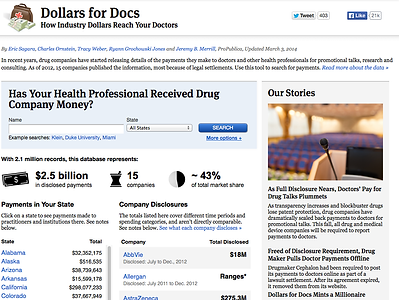TOOLS FOR CREATING MEANINGFUL MULTIMEDIA STORIES
Here are a few sites with tutorials and information about storytelling in multiple media.
The Advanced Media Institute at Berkeley has a wide-ranging archive of tutorials.
NewsLab, an online resource for journalists, posts resources and tools for journalists working across media. For example, one post offers podcasting tips and another is a quick Q & A on photojournalism and copyright issues.
TimelineJS does just what you'd expect: helps you create timelines to organize information in your stories.
SOME CLASSIC MULTIMEDIA EXAMPLES
Snow Fall is The New York Times' multimedia story about an avalanche accident. The treatment received so much attention in news media circles that then-editor Jill Abramson said, "Snow Fall has actually become a verb."
"Frontline's" interactive story about a Mumbai mass murderer mixes video and graphics in new ways. For instance, viewers can click on circles that a reporter draws on a transparent board to choose what area they want to learn more about.
How Mariano Rivera Dominates Hitters is a video component of a larger news story from The New York Times that combines animation and graphics to help explain a sports phenomenon.
NPR's Planet Money Makes a T-shirt follows the process of producing a T-shirt. The story includes audio and visuals taking us from U.S. cotton fields to Bangladesh to Colombia to sub-Saharan Africa, exploring the intersection of clothes, working conditions and global trade.
Multimedia
Journalists sometimes integrate graphics, videos, photos and text. The multimedia results are evolving in intriguing ways that make stories less linear and more interactive and allow readers more choices. Below are some especially strong examples.
Mass Public Shootings
The Washington Post has created an interactive graphic to tell the story of public mass shootings in the last 50+ years, conveying a remarkable amount of data in a readily accessible format. The site updates as additional shootings occur.
The Wall
This award-winning interactive story by The Arizona Republic and USA Today Network uses graphics, aeriel footage, short videos, print and photos from along the United States border with Mexico to illustrate the reality on the ground when it comes to the proposed border wall. Tools like the Knight Lab's StoryMap—and its other tools—can help you envision non-linear storytelling.
Doctors Who Receive Money from Drug Companies
ProPublica, the nonprofit news group, has pulled together and mapped information about which doctors accept payments from drug companies. The graphic allows people to look up their own doctors and carry on informed discussions with their doctors about which drugs are prescribed and why–and the ongoing coverage has helped to set these potential conflicts of interest in context.




